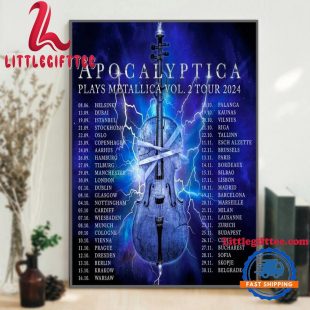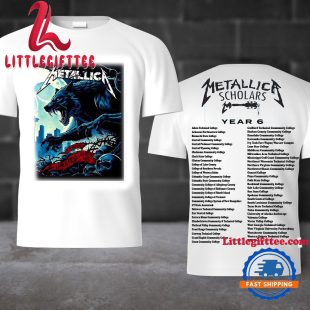Music
The Quest for the Worst Metallica Album An In-Depth Exploration
When it comes to the beloved heavy metal band Metallica, there’s a particular topic that drives fans into passionate debates: the quest to identify the worst Metallica album. This subject is not merely about rankings or critics’ opinions; it delves into personal experiences, nostalgia, and emotional reactions tied to music. In this article, we will explore various perspectives on this divisive issue, analyzing the albums that evoke strong feelings among listeners. From the ambitious yet polarizing “Lulu” to the raw intensity of “St. Anger,” we aim to dissect the intricacies surrounding Metallica’s discography and what it reveals about the nature of musical appreciation.
The Lure of Lulu: A Double-Edged Sword

The album “Lulu,” a collaboration with avant-garde musician Lou Reed, often emerges at the forefront of discussions surrounding the worst Metallica album. At first listen, one might wonder if this project was a bold artistic statement or simply a miscalculation in the band’s trajectory.
The Concept Behind Lulu
“Lulu” is unlike any other Metallica album; its experimental nature alienates many longtime fans. This collaboration is rooted in the theatrical works of expressionist writer Frank Wedekind, leading to an atypical listening experience.
The album comprises spoken word segments intertwined with heavy guitar riffs—a combination that may baffle listeners accustomed to traditional heavy metal structures. The abstract lyrics and overall avant-garde approach push the boundaries of what fans expect from Metallica. Some listeners have found the artfulness refreshing, appreciating the risk taken by the band to diverge from their comfort zone.
However, for others, this departure feels like a betrayal, resulting in a significant disconnect between the band and their audience. The expectation of thunderous riffs and high-energy anthems clashes with the contemplative and sometimes jarring atmosphere of “Lulu.” This dichotomy raises questions about the nature of creativity in music and whether artists should cater to their fanbase or explore new artistic avenues, regardless of potential fallout.
Critical Reception and Rankings
The critical reception of “Lulu” was undeniably mixed. While some outlets hailed it as a daring experiment, others placed it near the bottom of Metallica’s discography. The fluctuating opinions around “Lulu” exemplify the subjective nature of music criticism, where personal preferences significantly shape perceptions.
Many fans who embrace heavy metal’s conventions find it difficult to engage with “Lulu.” However, those with a more avant-garde taste might argue that the album represents a fascinating exploration of sound and emotion. The conversations surrounding the album illustrate that the designation of “the worst” is inherently subjective, influenced by individual tastes and expectations.
Furthermore, discussing “Lulu” compels us to consider how we define “bad” or “poor” quality in music. Is it merely a matter of aesthetic preference, or does it relate to an emotional connection that listeners seek? This layer of complexity adds richness to our understanding of why “Lulu” reigns as a frequent contender for the title of worst Metallica album.
A Departure from Traditional Metal
Metallica has always been a band unafraid of evolution. Their willingness to experiment can be seen as both a blessing and a curse. On one hand, it shows their commitment to artistic growth; on the other, it risks alienating long-time fans who cherish the band’s earlier work.
In a world where mainstream expectations often dominate, “Lulu” stands as a reminder that artistic integrity and personal vision can lead to divisive outcomes. Many view the album as a commentary on modern society’s challenges, presenting a stark contrast to the escapism often sought through music.
Listeners’ emotional responses to “Lulu” vary widely. For some, it resonates deeply—a cathartic experience that speaks to the human condition. Others, however, may find it disjointed, leading to frustration rather than enjoyment. This duality illustrates the challenge faced by artists who strive to innovate while remaining connected to their core audience.
St. Anger: Raw Emotion or Chaotic Misfire?

Another album frequently cited in discussions about the worst Metallica album is “St. Anger,” released in 2003. With its raw production style and unconventional song structures, this album evokes polarized reactions among fans.
The Backstory of St. Anger
“St. Anger” arrived during a tumultuous period for Metallica, marked by personal struggles and internal conflicts within the band. The album reflects this chaos, characterized by its aggressive tone and lack of polished production. It’s an uncompromising reflection of turmoil—both internal and external.
While some listeners appreciate the authenticity of this rawness, others find it grating. The absence of guitar solos and the unconventional songwriting choices left many fans yearning for the melodic intricacies of past masterpieces. For die-hard fans, hearing a stripped-down version of Metallica felt disjointed, challenging their expectations of what a Metallica album should deliver.
Emotional Resonance versus Artistic Choices
At its core, “St. Anger” explores profound themes such as anger, fear, and unresolved conflicts. It serves as an outlet for the band’s frustrations, encapsulating the pain and uncertainty experienced during this period. Those who resonate with the album’s emotional weight can appreciate its sincerity and vulnerability.
Conversely, listeners seeking the polished musicianship synonymous with Metallica may perceive “St. Anger” as a chaotic mess. The dissonance present in the production aligns with the message of the album but can alienate listeners looking for a cohesive experience. This duality highlights the impact of artistic choices on audience reception and the fine line between innovation and alienation.
The Importance of Contextual Listening
One crucial factor influencing perceptions of “St. Anger” is the context in which listeners approach the album. Fans who grew up with Metallica’s earlier works might struggle to reconcile the drastic changes in sound and style. Conversely, newer listeners discovering the band through “Death Magnetic” (released in 2008) may view “St. Anger” as an interesting, albeit flawed, chapter in the band’s journey.
This discussion of context encourages listeners to reevaluate their biases. Could the emotional resonance of an album shift based on when and how one discovers it? Engaging in discussions around “St. Anger” invites fans to reflect on their own musical journeys, considering how personal experiences shape their perceptions of Metallica’s evolving sound.
Challenging Traditional Heavy Metal Norms
“St. Anger” stands as a poignant example of Metallica’s ongoing exploration of sound and identity. By challenging traditional heavy metal norms, the band invites listeners to confront their preconceived notions. The album’s rawness and confrontational lyrics compel listeners to engage on a deeper level, prompting conversations about authenticity in music.
While many fans criticize “St. Anger” for its lack of sophistication, others champion its daring approach. The discourse surrounding the album underscores the complexity of defining musical success—whether it lies solely in technical prowess or the ability to evoke genuine emotions.
The Role of Nostalgia in Musical Opinions

As we navigate the labyrinth of opinions surrounding the worst Metallica album, it becomes increasingly clear that nostalgia plays a pivotal role. Each listener’s relationship with Metallica is intrinsically connected to their unique experiences, shaping their perceptions of the band’s discography.
Personal Connections and Memories
For countless fans, Metallica represents a soundtrack to formative moments in their lives. Whether it’s headbanging at a concert or bonding over albums with friends, these memories intertwine with the music itself. Consequently, critiques of specific albums may evoke defensive reactions as individuals feel personally invested in their connections to the band’s work.
Those who discovered Metallica during their thrash-heavy years may look back fondly at albums like “Master of Puppets” or “Ride the Lightning,” feeling a sense of ownership over the band’s legacy. Conversely, younger fans who entered the Metallica fold through more recent releases may struggle to connect with older works, leading to skepticism regarding perceived “low points” in the band’s catalog.
Shifting Perspectives Through Time
Perceptions of music can shift dramatically over time. Albums once dismissed as inferior may later be re-evaluated through a different lens. As listeners grow and evolve, their understanding of music, artistry, and genre dynamics influences how they view Metallica’s discography.
For example, a fan initially resistant to “Lulu” may come to appreciate its artistic ambition after exploring other avant-garde music. This idea underscores the importance of keeping an open mind when revisiting albums that may have earned a reputation as the worst Metallica album.
Moreover, the engaging dialogues facilitated by platforms like Reddit offer fans avenues to express and reassess their opinions. By sharing personal anecdotes and reasoning behind their sentiments, listeners enrich the broader conversation surrounding Metallica’s work, illuminating the diverse interpretations present within the fanbase.
Music as a Shared Experience
The communal engagement surrounding Metallica’s albums fosters a sense of shared experience among fans. Conversations about the worst Metallica album often transcend mere rankings, allowing fans to connect over deeply-rooted emotions tied to their musical journey.
This exploration of music as a shared experience emphasizes that every opinion is colored by personal history and emotional resonance. Engaging with fellow fans creates an opportunity for empathy, enabling individuals to appreciate varying perspectives without invalidating their feelings.
Redefining Bad Music: The Transformative Power of Artistry
As we traverse the complex landscape of Metallica’s discography, the quest to identify the worst Metallica album prompts a broader inquiry about what constitutes “bad” music. Through examining the band’s evolution, we begin to realize that our definitions of quality are far from static.
Challenging Conventional Standards
The very act of labeling an album as the “worst” invites us to question conventional standards within the music industry. Does commercial success equate to artistic merit? Should a deeper emotional connection outweigh technical proficiency? These inquiries challenge us to rethink how we gauge musical quality, prompting discussions that extend beyond Metallica’s catalog.
The experimental nature of “Lulu” and the raw honesty of “St. Anger” serve as reminders that music is an ever-evolving medium, shaped by societal, cultural, and technological influences. In challenging established norms, Metallica opens itself to both criticism and praise, revealing the complexities inherent in artistry.
The Subjectivity of Musical Experience
Ultimately, the dialogue surrounding the worst Metallica album exposes the deeply subjective nature of musical experience. Factors such as personal taste, nostalgia, and life circumstances play significant roles in shaping opinions. As music evolves, so too do our perceptions, prompting us to reconsider what we define as “bad.”
Engaging in conversations surrounding Metallica’s discography encourages active participation, inviting fans to articulate their experiences and embrace differing viewpoints. This collective evaluation transforms the narrative surrounding perceived failures into an exploration of artistry, authenticity, and the changing landscape of heavy metal.
Embracing Diverse Perspectives
The quest to crown the worst Metallica album signifies more than just ranking; it embodies the rich tapestry of human experience. Each opinion offers a unique lens through which we can better understand our relationship with music itself. Rather than focusing solely on negative critiques, we can celebrate the diversity of interpretations that arise from the band’s extensive body of work.
By embracing these varying perspectives, we cultivate a deeper appreciation for Metallica as artists navigating their own creative landscapes. The ongoing conversation around their albums invites us to participate in a collective examination of musical identity, continually redefining what it means to connect with a band that has shaped heavy metal history.

The pursuit of identifying the worst Metallica album is more than a simplistic ranking; it is a multifaceted exploration of music, identity, and personal experience. Through our analysis of albums like “Lulu” and “St. Anger,” we uncover the complexity of listener emotions and the nuances that inform opinions.
This dialogue encourages us to reflect on our own relationships with music, acknowledging the impact of nostalgia, context, and personal journeys. As we navigate the ever-changing landscape of Metallica’s discography, we come to appreciate the diverse experiences that shape our understanding of what truly defines “bad” music.
In the end, the quest serves as a reminder that art isn’t merely consumed; it is experienced and shared, inviting us to engage with each other and foster meaningful connections through the power of sound.




















